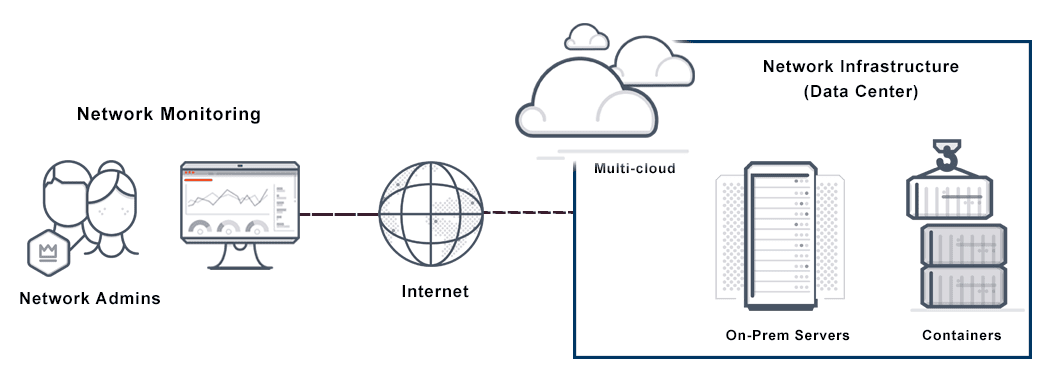
Get the report
MoreNetwork performance monitoring (NPM) is the process by which IT organizations can assess how users are experiencing their networks. By visualizing, troubleshooting, tracking, monitoring, and assessing the health and availability of your network to users, you can determine the user experience and make adjustments if necessary. Network performance monitoring allows IT teams to anticipate potential crashes and take a proactive approach to keep their networks running at an optimal level.
NPM solutions utilize automated monitoring tools and software in order to gather network data, identify and measure network performance variables, perform network assessments, and diagnose network performance issues.
NPM tools collect data from a number of different sources, including packets, SNMP, Flow, and flow data charts to provide IT members with a complete understanding of the health of your network and the various systems and applications connected to it.
While you can benefit from hardware NPM solutions, cloud-based or hybrid cloud-based technologies are becoming more commonplace.
Some of the most used and popular NPM tools on the market today include:
Different NPM analytics have different uses for network performance monitoring. From monitoring communication channels and troubleshooting network devices to streamlining the analysis of complex errors, NPM analytics help keep networks at optimal performance and prevent network limitations like bottlenecks.
Flow data - gives you key information generated from relevant network devices. Flow data analytics gives you insight into communication channels, what kind of data was transferred across communication channels, to whom the data was transferred, and other important information regarding the logistics of the data movement.
SNMP - Simple Network Management Protocol (SNMP) provides monitoring to all network devices. When networks and systems incur outages or failures, SNMP protocols will notify IT teams and provide them with the necessary information to resolve their network issues before they get out of hand. SNMP can inform IT members of performance indicators such as memory, CPU, network errors, and packet loss, among others.
Packet Capture - the compiling and storing of data packets as they transfer to various locations within the network. When packets are captured and stored, they can help with troubleshooting, identify vulnerabilities, clarify any capacity-related issues, and provide detailed forensic analysis when errors or issues do occur.

If your networks are at the heart of your company’s operations, then network analytics is everything surrounding the heart that helps keep it pumping properly. NPM analytics are important because they can inform you when incidents occur, help you anticipate network errors, and give you important insights as to how incidents occur so you can mitigate their effects and plan for the future.
For enterprise-level networks and organizations that grow and transform every day, they need powerful analytics to help them gain the necessary insights that keep their networks running smoothly.
Tools are available to help provide deep network analytics capabilities for enterprise-level organizations. These tools come equipped with automated incident response features and give security members the tools they need to interpret all the data generated in their networks. AI and machine learning are also making it easier for IT teams to streamline the analysis process so organizations can access their necessary information with ease.
IT teams should also be sure that their analytics capabilities reach across their entire network, not just individual portions of their network. With only limited network visibility, you increase the chance of misinterpreting data and conflating portions of your network onto the whole.
Sumo Logic provides a cloud-scale platform for monitoring and managing application performance across your entire hybrid cloud environment.
Sumo Logic makes it easy to capture and aggregate event logs and other data from your application and IT infrastructure, providing you with the necessary insights you need to mitigate threats and keep your networks secure.